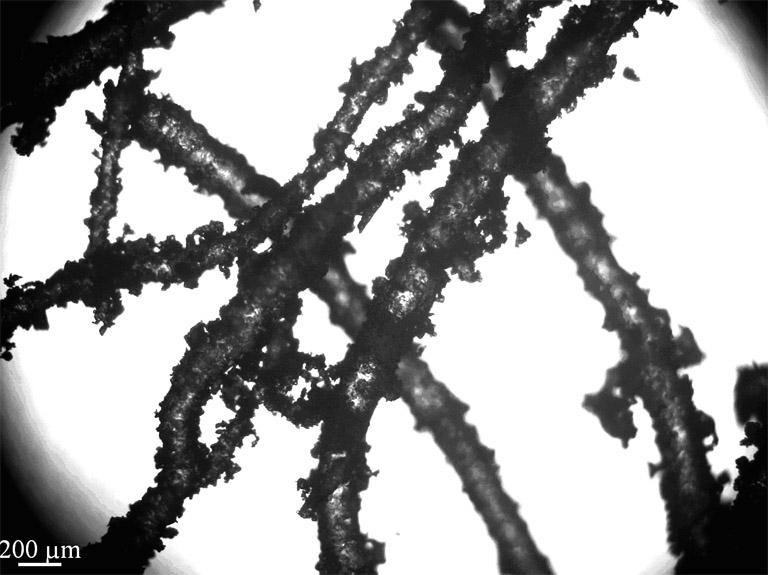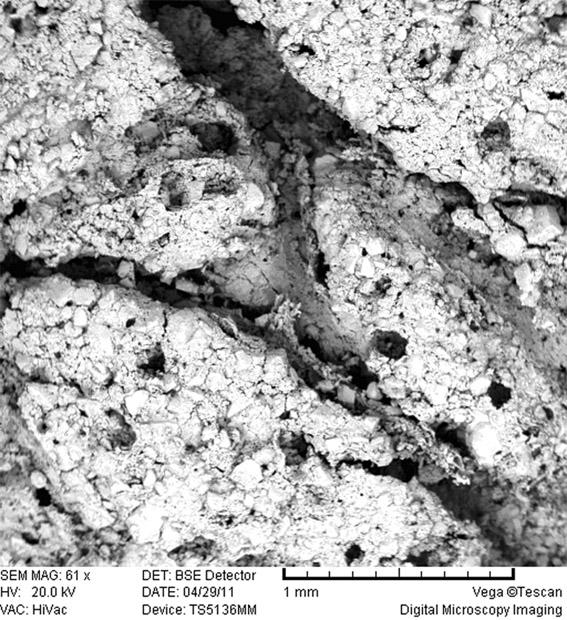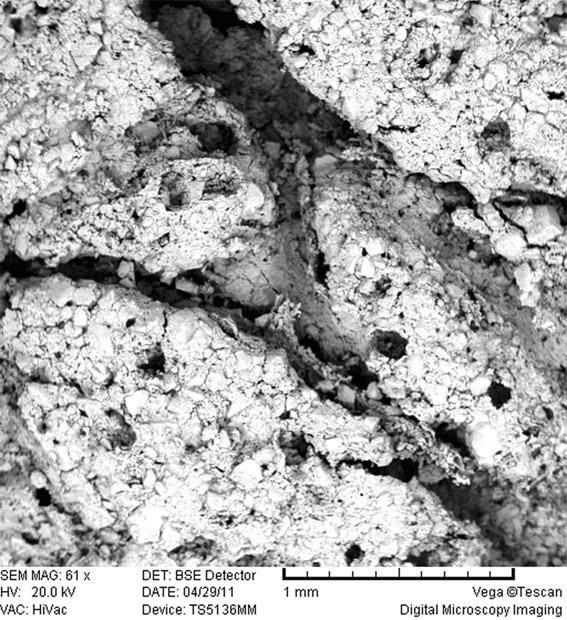Porous stent with network passage and preparation method of porous stent
A technology of porous scaffolds and network channels, applied in the field of biomaterials and regenerative medicine, can solve the problem of no difference in effect
- Summary
- Abstract
- Description
- Claims
- Application Information
AI Technical Summary
Problems solved by technology
Method used
Image
Examples
Embodiment 1
[0035] Example 1 Add 1.8 g β-TCP to 1.1 g 5% polyvinyl alcohol (PVA) aqueous solution, stir, grind, then add 0.45 g 380-550 μm diameter paraffin balls and stir evenly, then pour 0.054 g loofah (diameter 300 μm), the scaffold was taken out, placed at room temperature for 24 h, put into a muffle furnace and heated to 1050 °C for sintering, and a porous scaffold with network channels was obtained. A three-dimensional porous scaffold with channels (300 μm in diameter) with a pore size of about 450 μm and a porosity of about 50% was obtained.
Embodiment 2
[0036] Example 2 Add 1.8 g of hydroxyapatite to 1.1 g of 5% PVA aqueous solution, stir, grind, then add 0.45 g of paraffin balls with a diameter of 380-550 μm and mix well, then pour into a mold with 0.054 g of loofah (300 μm in diameter) After compression molding, the scaffold was taken out, left at room temperature for 48 h, placed in a muffle furnace and heated to 1100 °C for sintering to obtain a three-dimensional porous scaffold with a channel (diameter of 300 μm) with a pore diameter of about 450 μm and a porosity of about 50%.
Embodiment 3
[0037] Example 3 Add 1.8g β-TCP to 0.54 g 10% PVA aqueous solution, stir, grind, then add 0.45 g 270-380 μm diameter paraffin balls and stir evenly, then pour into a mold with 0.054 g loofah (diameter 300 μm) for molding After molding, the scaffold was taken out, left at room temperature for 24 h, put into a muffle furnace and heated to 1050 °C for sintering, and a three-dimensional porous scaffold with a channel (diameter of 300 μm) with a pore diameter of about 300 μm and a porosity of about 50% was obtained.
PUM
| Property | Measurement | Unit |
|---|---|---|
| Diameter | aaaaa | aaaaa |
| Size | aaaaa | aaaaa |
| Aperture | aaaaa | aaaaa |
Abstract
Description
Claims
Application Information
 Login to View More
Login to View More - R&D
- Intellectual Property
- Life Sciences
- Materials
- Tech Scout
- Unparalleled Data Quality
- Higher Quality Content
- 60% Fewer Hallucinations
Browse by: Latest US Patents, China's latest patents, Technical Efficacy Thesaurus, Application Domain, Technology Topic, Popular Technical Reports.
© 2025 PatSnap. All rights reserved.Legal|Privacy policy|Modern Slavery Act Transparency Statement|Sitemap|About US| Contact US: help@patsnap.com



